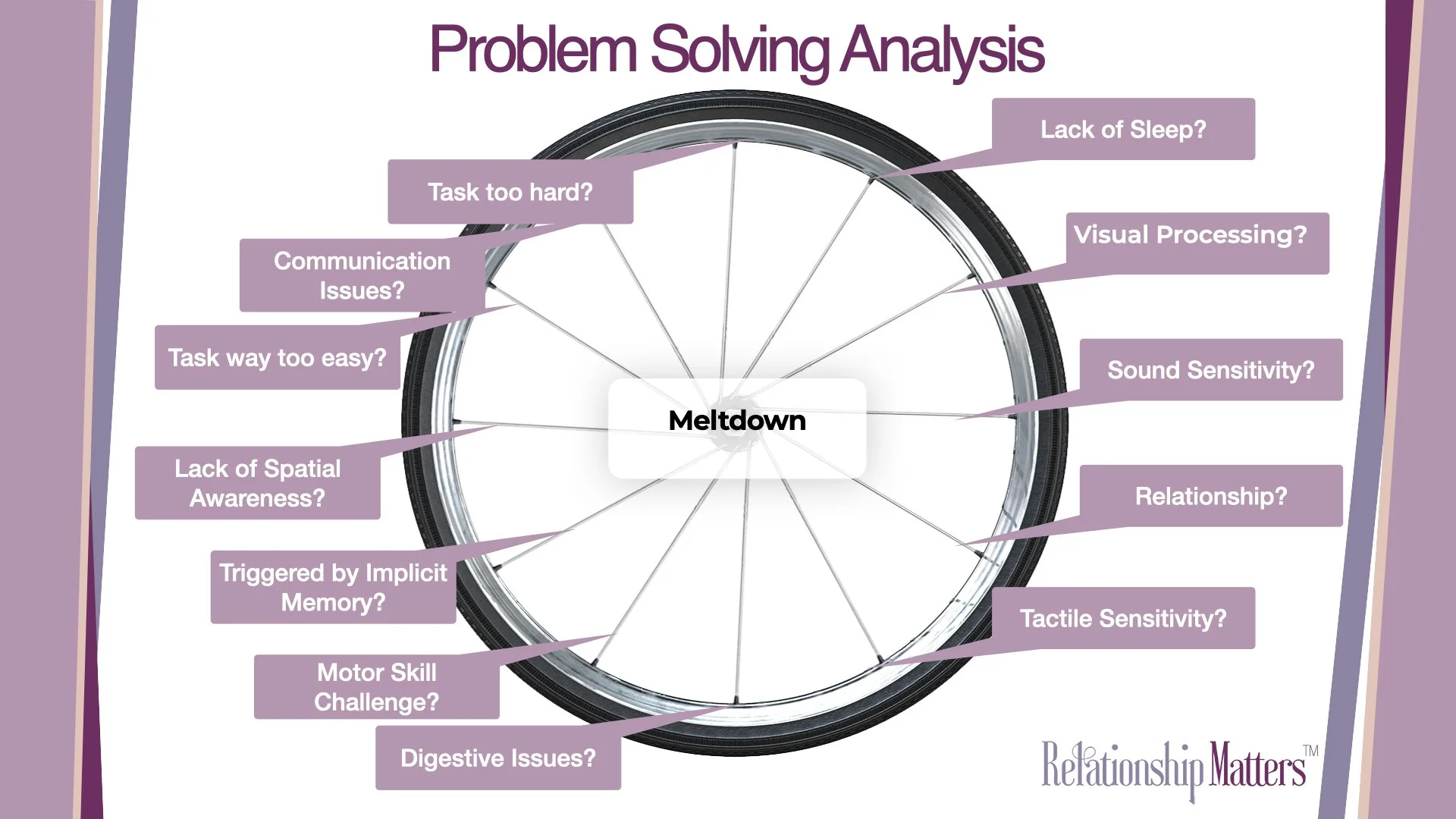Spokes on the Wheel
by Kim Barthel and Bob Spensley
In Becoming a Behavioural Detective, we learn to appreciate the complexity of why people do what they do. It can be difficult for therapists, educators, and parents to hold in mind all the multiple possibilities of physiological, emotional, environmental, relational, and contextual variables that may contribute to a person’s “challenging” experience in the moment. Thankfully, Occupational Therapy training in particular instills in clinicians many skills that evaluate human behaviour with a relatively holistic mindset. In my experience with OT, I appreciate that this mindset is backed with clinical reasoning that is ever-increasingly informed from research and practice across many disciplines.
In attempt to simplify the holistic clinical reasoning process, Relationship Matters developed a model called SPOKES ON THE WHEEL. The model is represented by a bicycle wheel that needs all of its spokes to roll efficiently. Each potentially influencing variable in any complex behaviour (or challenge, or goal) gets its own spoke. Through identification and assessment of each of these components, modifications can be made to help the situation become easier for the people involved. For example, in the case of a child having a meltdown, here are a number of contributing considerations that could be named as the spokes: Fatigue, Hunger, Relational Insecurity, Sensory Challenge… To support this child, we would then look to the environment, opportunities for co-regulation, sensory interventions, diet, sleep habits, movement experiences and so on. In teasing apart each spoke, and realizing that complex behaviour is often a result of a combination of factors, interventions can be created and evaluated as you go. In keeping with the philosophy of one of my most influential mentors, Regi Boehme, OTR - “When it works it’s treatment, and when it doesn’t it’s assessment”. Designing interventions therefore becomes a trial-and-error process of assessment and treatment that systematically allows for the testing of each spoke hypothesis as a valuable process of supporting human behaviour.
The days when a child would present with Attention Deficit Disorder characteristics and get prescribed a drug as the first consideration in intervention are thankfully behind us. As more professionals become increasingly informed about the many potential contributions to behaviour (e.g. cognitive, sensory and emotional factors) and how they may relate to one another, then more effective and attuned interventions immediately come to mind in helping the situation and individuals involved.


